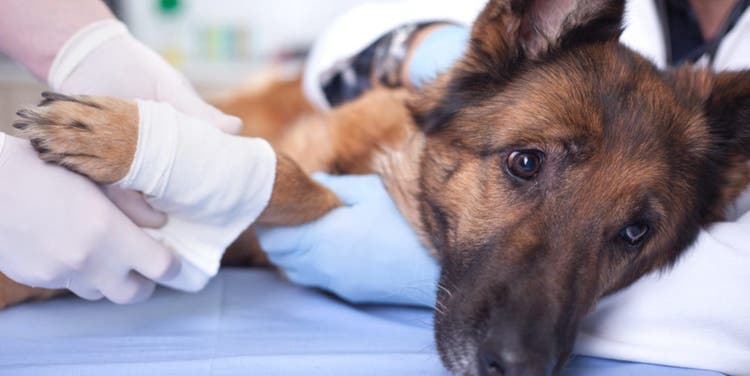
What to Do During a Pet Emergency
You can be one of the greatest pet owners in the world, giving your dog or cat — or even another animal — the best life they can live, spoiling them with treats and toys, playtime, love and affection, and much more, but find yourself totally unprepared to deal with a pet emergency. If you’ve never dealt with a pet emergency, this is normal. But it’s better to be prepared beforehand than have to figure things out on the fly.
What is a Pet Emergency
So what exactly classifies as a pet emergency? There are plenty of odd occurrences that might look and even sound pretty terrifying, such as a cat coughing up a hairball, that does not require emergency care or immediate medical attention. It’s important to determine the difference between one of these odd occurrences and a pet emergency.
Being prepared for and able to identify a pet emergency is critical, as you never know when one will strike. Be sure to recognize and take note of when your pet is behaving out of the norm, even if it’s something you may deem to be minor. Jot down what happened, when it happened, what might have caused it, how long it lasted, and other descriptive details as this could potentially benefit a medical professional if it gets to the point where your pet needs to visit one.
Below is a list of incidents that may be considered a pet emergency and could require medical care. If your pet has experienced any of the following, please consider seeking immediate medical attention. At the very least, give your vet a call and describe the symptoms your pet is experiencing.
- Unconsciousness
- Injury to the eyes
- Injuries sustained in a fight with another animal such as wounds or scratches
- Ingestion of chocolate, grapes, or other non-dog friendly foods
- Constant dry heaving
- Bleeding from any part of the body
- Insect bites causing excessive itching
- Refusing to eat food or drink water for a period of 24 hours
- Showing visible pain when trying to go to the bathroom
- Fever, burning up
- Nausea
- Visible limping and pain
- Atypical anxiety/behavior towards you as an owner
- Difficulty breathing
- Choking
- Seizures
- Rapid breathing or difficulty breathing
- Difficulty standing or walking
What to Do During an Emergency
If you’ve determined that your pet either is or has encountered one of the incidents provided above and is exhibiting concerning symptoms, you should call your vet immediately. Provide your vet with as much information as you can about what happened or is happening to your pet, how they’re behaving, what you believe might be the cause of it, and ask them what you should do next.
As a pet owner, it’s important to remember to protect yourself in these situations because a pet that is ill or severely injured may act aggressively or lash out towards you, putting you at risk. Approach them with care, but always make sure that you’re protecting yourself, first and foremost.
If you deem it to be serious enough and if time is critical, you might just want to take your pet to a 24/7 emergency veterinary hospital right away. When it comes to some emergencies, time is of the essence and the quicker you can get your pet to a medical professional, the better off you’ll be.
Depending on what kind of pet you have, there are different approaches to take in order to get them ready to be transported to the pet hospital. When it comes to dogs, make sure to approach them slowly, calmly saying their name until you can determine whether they’re behaving aggressively or not. If they are, you may want to call for assistance. If not, you’ll want to carefully pick them up and lay them in your vehicle on a pile of blankets and/or pillows to make them comfortable. If they have possible broken bones, you’ll want to be extremely careful as to not injure them even further.
Approaching a cat is a little bit different. As cats can bite, you’ll want to gently place a towel over their head in order to prevent them from injuring you. Pick them up and put them in their portable crate or carrier you typically use and then transport them to your car.
At Home First Aid
Typically, a pet emergency requires immediate attention from a veterinary professional, but there are certain first aid methods that might benefit your pet and prepare them to be transported to the vet hospital.
There are certain things you can do at home to supplement veterinary help instead of seeing the vet. If your dog is choking, place your fingers in its mouth to see if you’re able to remove whatever it is that they’re choking on. If you’re unable to, performing a version of the Heimlich maneuver might help your dog. Read more about How to Do the Heimlich on Your Dog.
You might find yourself needing to perform CPR if your pet has gone unconscious. Read more about How to Do CPR on Dogs.
Best Practices
While it’s important to be prepared and know what to do during a pet emergency, it’s also important to know how to identify one. Consider getting pet insurance so that you will be prepared if you do ever encounter a pet emergency. That way, you’re not stuck paying hundreds, if not thousands, of dollars of medical bills.